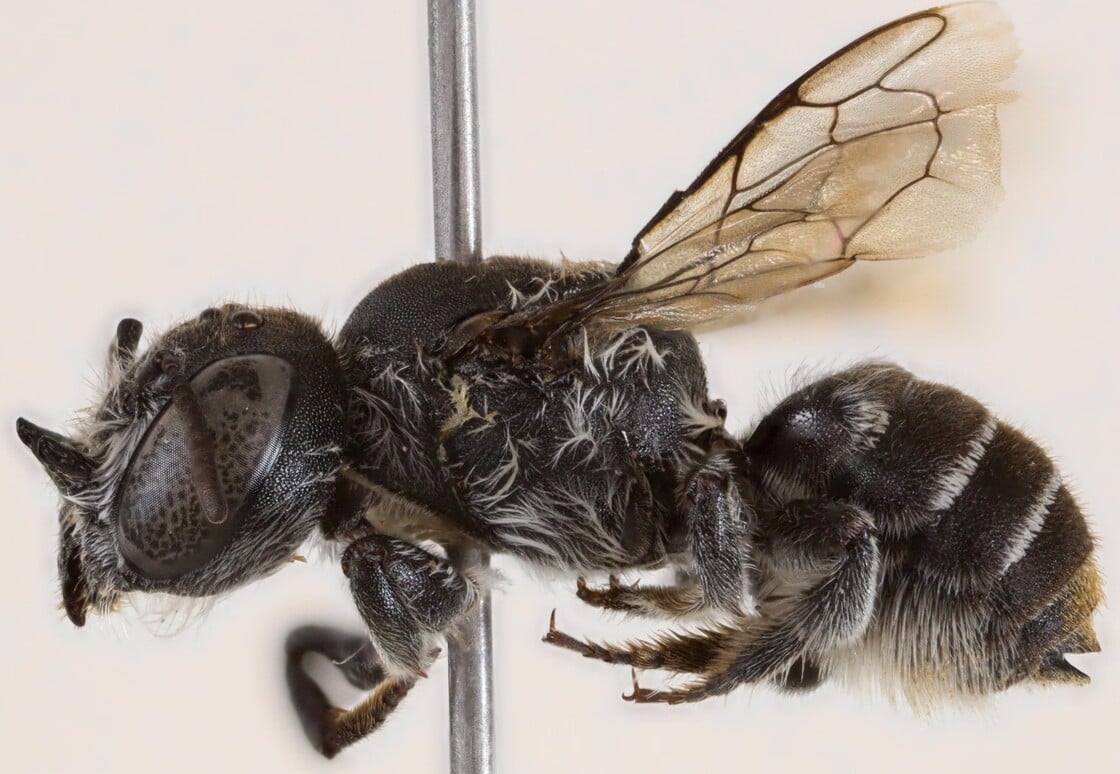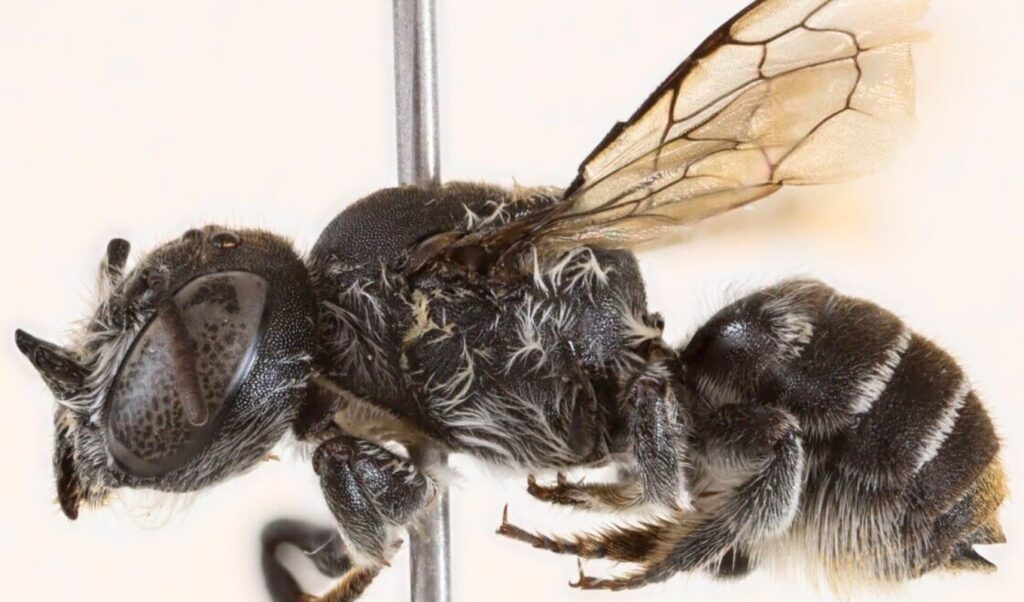Australian scientists have discovered a new species of bee with microscopic horns, which they named Megachile Lucifer, giving it—as the BBC comments—”a fittingly diabolical name.” The discovery was made during observations of a rare wildflower that grows exclusively in the Bremer Range in Western Australia’s Goldfields region. The announcement was made by Curtin University in Perth, emphasizing the rarity of the finding.
Read: “Drunk” bees in Australia: The “alcohol” from flowers and hive protection
The “exceptionally distinctive, protruding horns” are found only on the female bee, and according to researchers, may serve for defense, pollen or nectar collection, as well as resin gathering for nest construction.

“It’s the first new member of this bee group in over 20 years”
The study’s lead researcher, Kit Prendergast from the university’s School of Molecular and Life Sciences, explained that the name Lucifer (meaning “light-bearer”) was given due to the striking appearance of the tiny horns on the insect’s head.
“The female had incredibly small horns on its head,” she noted characteristically, adding that Megachile Lucifer is the first new member of this bee family in 20 years—a discovery that literally illuminates the “dark” microcosm of Australian fauna.
The scientist and fan of the Netflix series “Lucifer” deemed this name perfectly suited to the bee’s appearance.
“It’s the first new member of this bee group in over 20 years, which shows how many life forms we still have to discover, including in areas threatened by metal mining, like Goldfields,” where “Lucifer” was discovered, Prendergast noted.
The specialist hopes this discovery will raise awareness about the many unknown species that may still exist in these regions.
“Since the new species was discovered in the same area as the endangered wildflower, both species may be threatened by disruption of their ecosystem and other processes, such as climate change,” she warned.
“Many mining companies still don’t document native bees, which means we might be losing species, especially those that play critical roles in maintaining threatened plants and ecosystems. We risk losing them before we even know they exist,” she emphasized.
Almost all flowering plants depend on wild pollinators, particularly bees, but habitat loss and climate change are leading to the extinction of many vital species.




